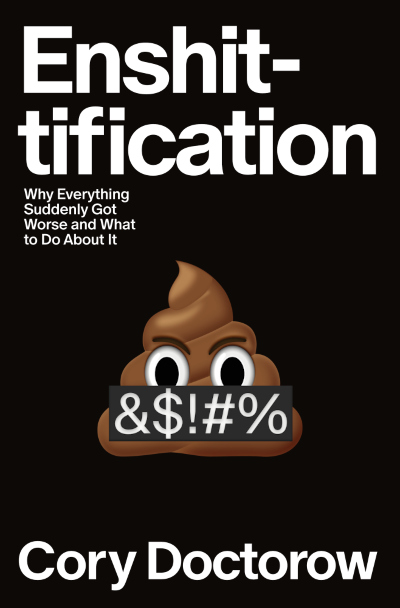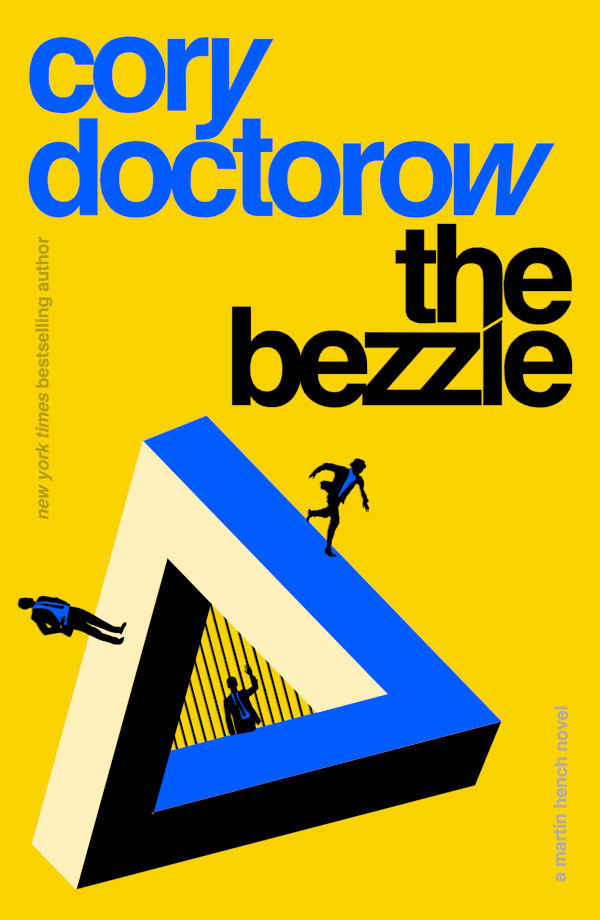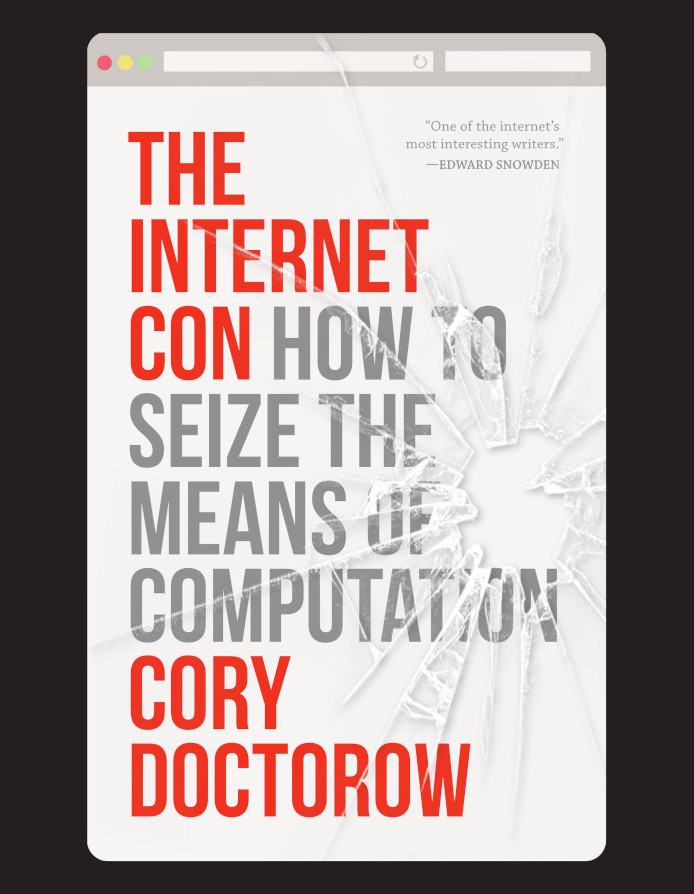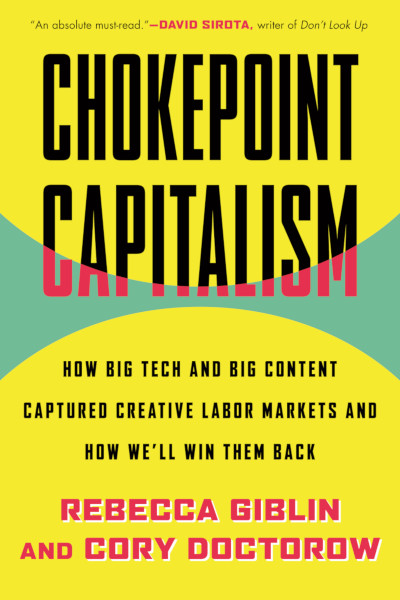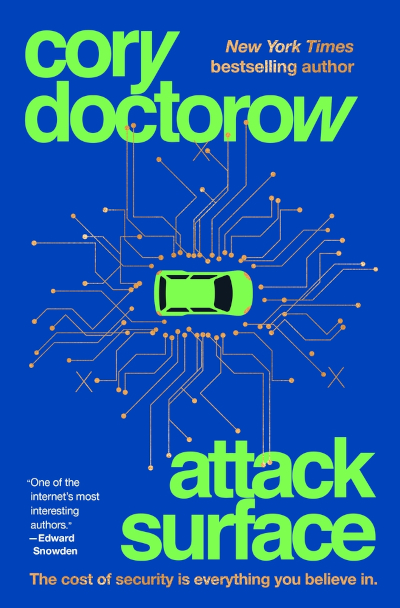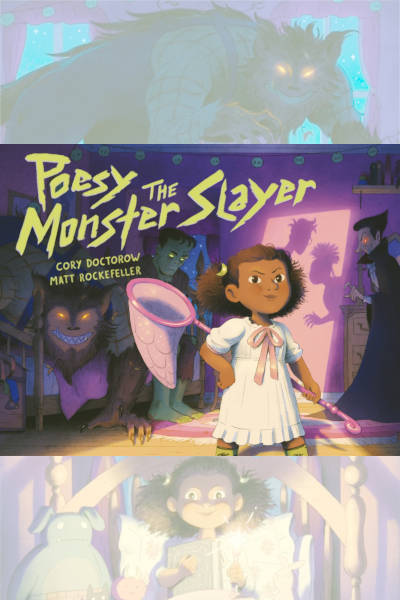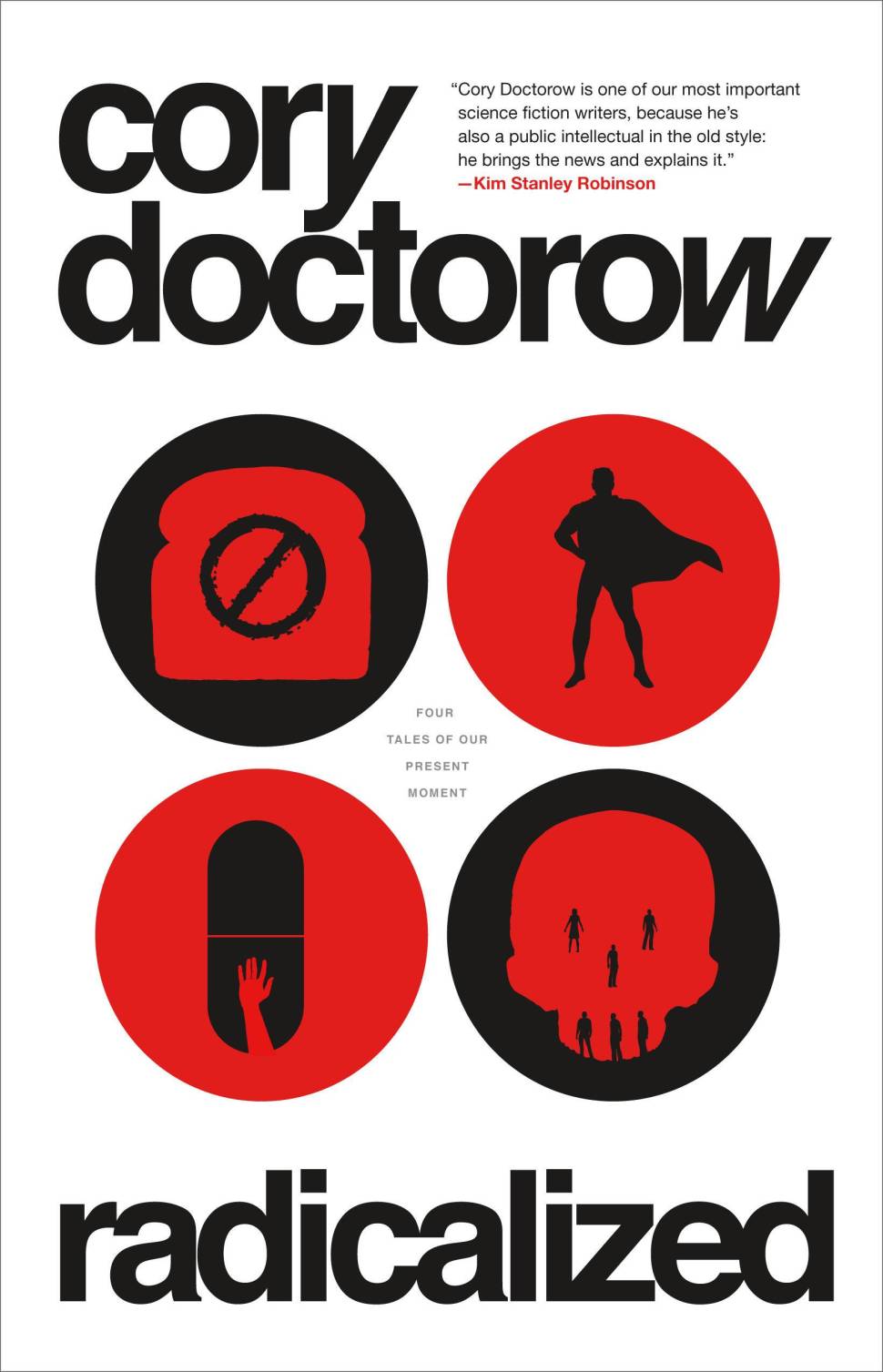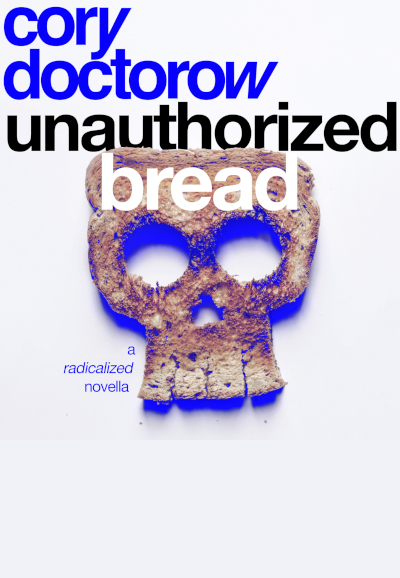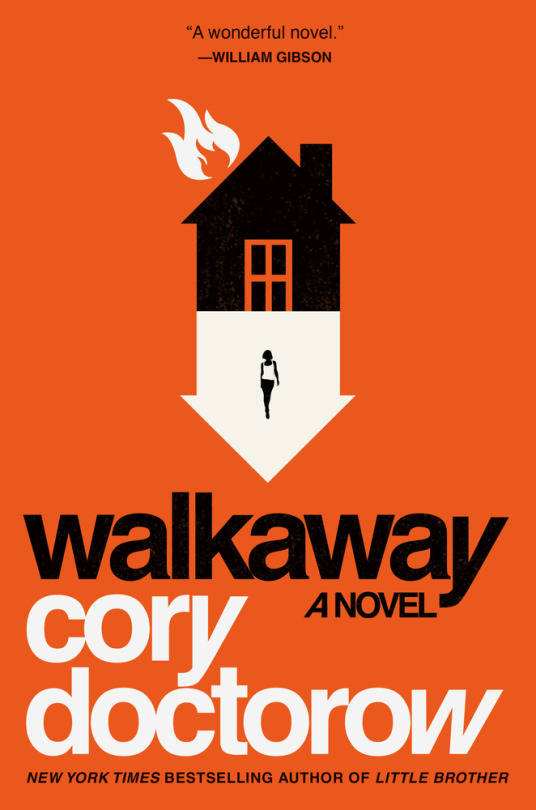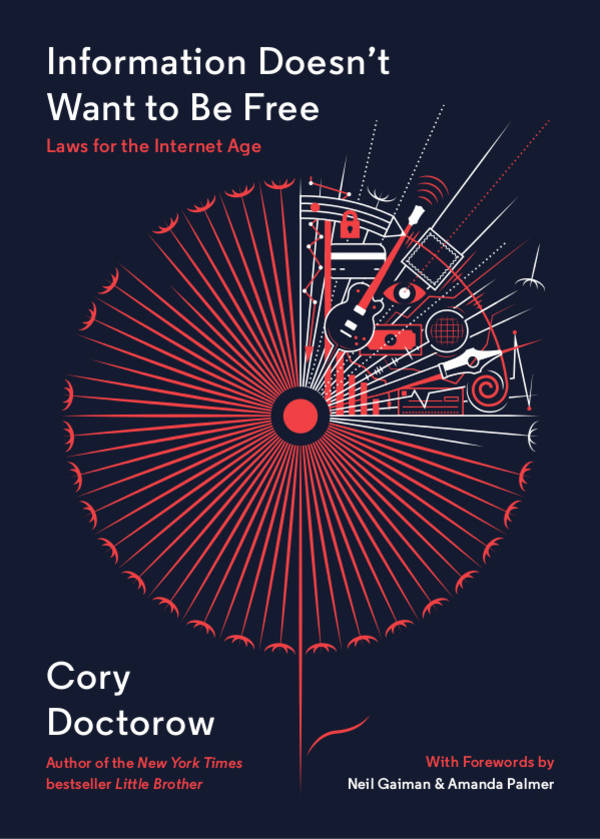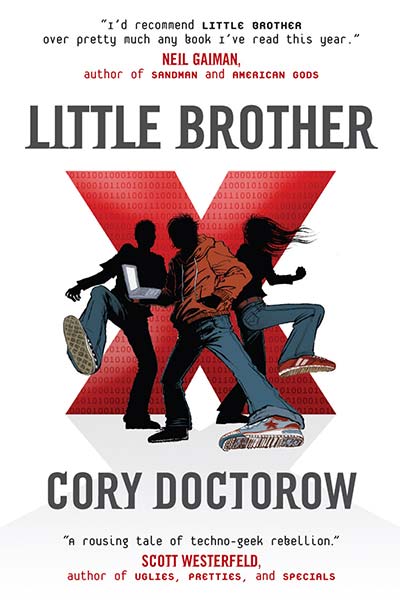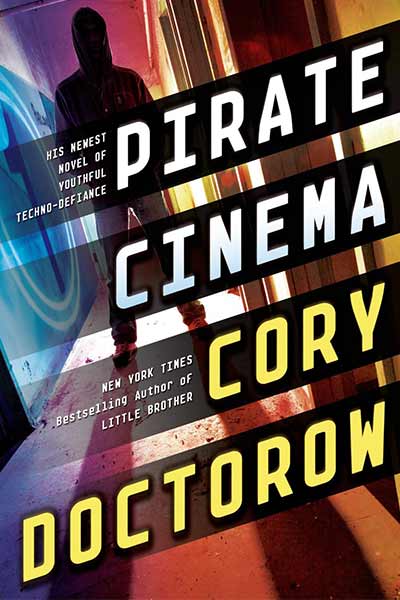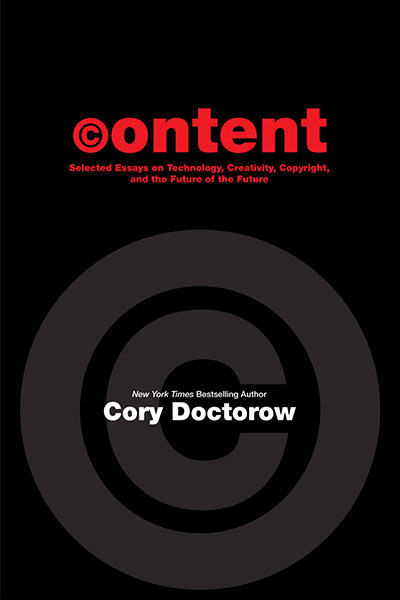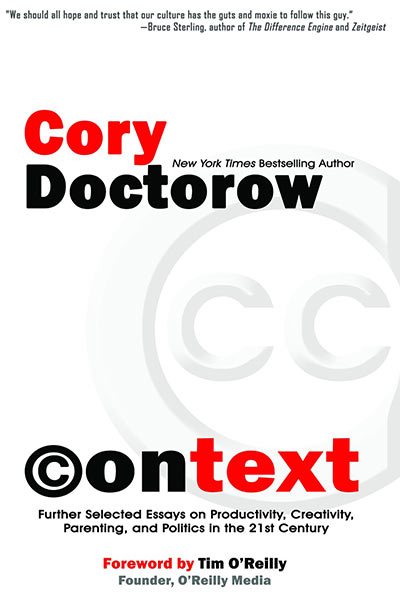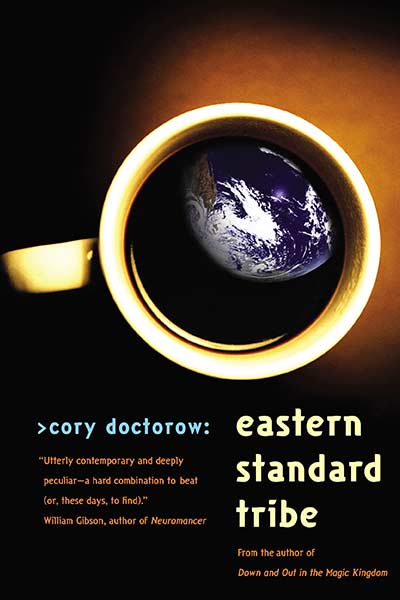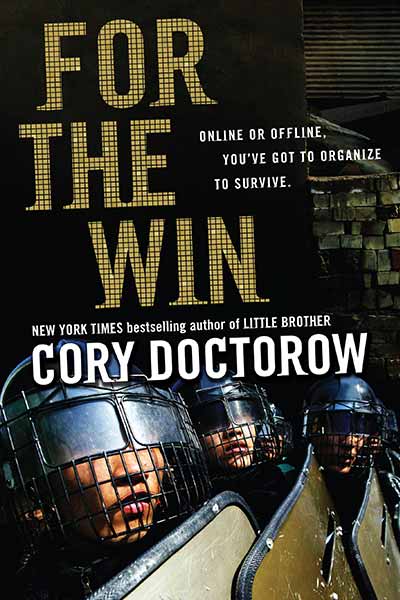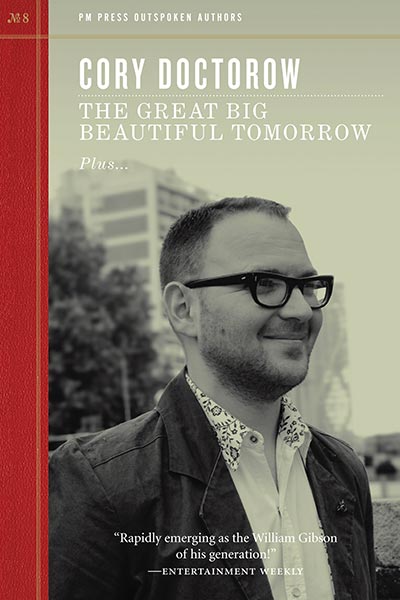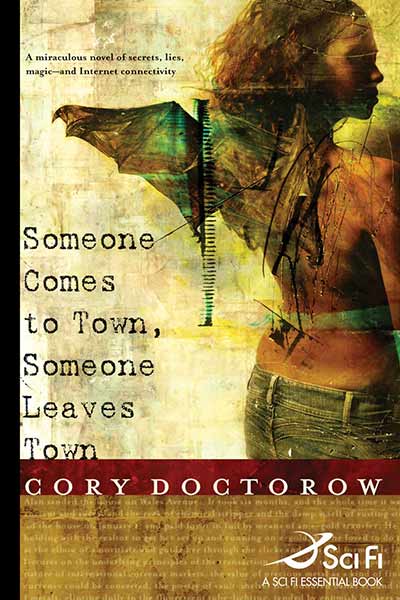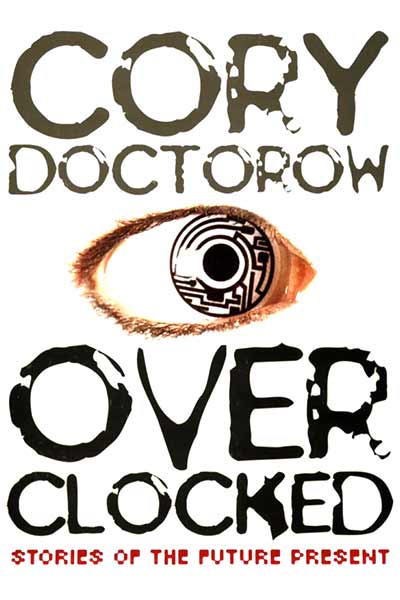I did a really fun interview on Makers and the writing process for the Bazooka Joe podcast, which has many other interesting writers in this latest instalment (Annalee Newitz, JC Hutchins and Steve Eley).
Globe and Mail
Makers took me places I’d never been and would not have thought of visiting, and I had a wonderful time there. It introduced me to some really interesting strangers and involved me in their remarkable lives. It painted a persuasive picture of a better tomorrow I’ve been having more and more trouble imagining lately. And it was a lot of fun. It gives me renewed hope for the future, of both written science fiction and the world.
Here’s an interview I conducted earlier this year in Ottawa with Nigel Beale, a literary critic and rare books specialist. We talk about the future of books, bookselling and copyright — it was a great chat.
Here’s a quick interview on technology and kids I shot with TVOntario’s TVOParents last month.
Here’s part three of the podcast of my story in progress, MARTIAN CHRONICLES, being written for Jonathan Strahan’s YA Mars book, LIFE ON MARS.
The Trans-Atlantic Fan Fund is a venerable institution that sends sf fans from North America to Europe and vice-versa, to bridge the world’s fandoms (there are other funds that bring together fans from other parts of the world). Frank Wu, Anne KG Murphy and Brian Gray are fundraising for this year’s fund, and they’ve solicited many writers — Charlie Stross, Nalo Hopkinson, David Brin, Elizabeth Bear, Julie Czerneda and Mary Robinette Kowal and me! — to donate “tuckerizations” in forthcoming works for a charity auction. Tuckerizing is the inclusion of a real person’s name in a fictional piece (previous tuckerizations from charity auctions in my novels include General Graeme Sutherland in Little Brother, Suzanne Church in Makers, and Connor Prikkel in the forthcoming For the Win; my god-daughter Ada has also been tuckerized in my story “I, Robot” and in Makers).
TAFF is also auctioning off a first edition of “Nineteen Eighty-Four” (!), and John Hersey’s “Hiroshima.”
It’s a great cause, and great prizes that make killer gifts (how cool would it be for a kid to grow up with her name on a character in a wonderful novel?)
(Thanks, Frank!)
Nice, short profile in today’s Wall St Journal about pursuing a career in the nonprofit sector:
For those who are interested in doing the same, he stresses the importance of volunteering for a cause first. “Your best bet is to join up with a cause pro bono or part time,” he says. “You have to be realistic and see the value of each experience.”
Among the various types of nonprofits, some of the most visible are community-based organizations that provide direct services such as Meals on Wheels, job-placement assistance and child care. Others are concerned with arts and culture, advocacy and social policy, scientific research or international outreach.
How do you go about targeting a nonprofit with which to work? Mr. Doctorow recommends approaching organizations as a donor would and looking carefully at their statistics. “Find out their ideology, how they pay their executives, how they administer their funds and how they handle crises,” he says.
If your hope is to procure a full-time job, your odds will be better if you select a larger nonprofit. Staff roles at these organizations include the executive director, the director of development (fund raising), the director of programming and the director of marketing.
Techland
Speaking as a dude who’s into tech and yet cannot code and has average mortal math skills, and who as a result has never made anything in his life except letters on a screen, I have a deeply romantic love of engineers and hackers. I have never seen that love expressed so purely and burningly as Doctorow does in Makers. And incredibly, Doctorow actually works out his creations’ creations and lets you watch Perry and Lester hack them together before your eyes.
Lev Grossman, Techland

John did a wicked-cool set of data-visualizations of the text of my story Anda’s Game: “I picked terms for the trees that were relevant to the themes of the story – gold, for in-game items and Fahrenheit, which is a clan in the story.”

John did a wicked-cool set of data-visualizations of the text of my story Anda’s Game: “I picked terms for the trees that were relevant to the themes of the story – gold, for in-game items and Fahrenheit, which is a clan in the story.”
